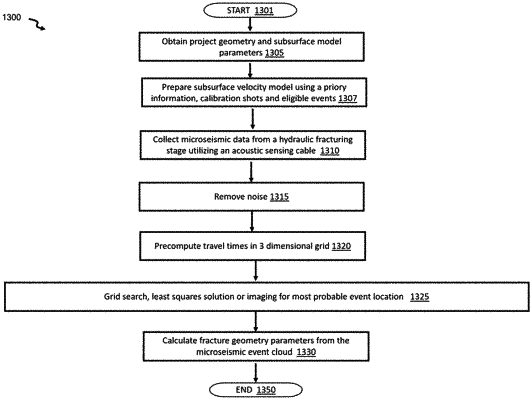| CPC G01V 1/50 (2013.01) [E21B 43/121 (2013.01); E21B 43/26 (2013.01); E21B 47/135 (2020.05); E21B 47/14 (2013.01); G01V 1/282 (2013.01); G01V 1/303 (2013.01); G01V 1/306 (2013.01); G01V 2210/626 (2013.01); G01V 2210/6222 (2013.01)] | 20 Claims |

|
1. A method of microseismic monitoring comprising:
deploying at least one distributed acoustic sensor (DAS) of a DAS system in a first well to detect and acquire source-locations of one or more microseismic events within a region proximal to a treatment well;
obtaining pre-stimulation data from the treatment well to be hydraulically fractured;
identifying multiple stratigraphic layers in a subterranean zone surrounding the treatment well;
determining rock-velocity heterogeneity and rock-velocity anisotropy of rock surrounding the treatment well in the subterranean zone;
characterizing a path of the treatment well based on the obtained pre-stimulation data;
monitoring pre-stimulation microseismic data associated with the at least one distributed acoustic sensor;
fracturing the treatment well by injecting hydraulic fracturing fluid in the treatment well to form a set of fractures;
monitoring microseismic data from the first well with the at least one distributed acoustic sensor while fracturing the treatment well in a first fracture stimulation stage to form the set of fractures; and
calculating a fracture map from the source-locations, the fracture map calculated based on identified rock-velocity dynamics, irregularities in a first well deviation in computation of acoustic travel times, and a weighted probability density function, where each weighting includes variable weighting in an event-location probability density function.
|